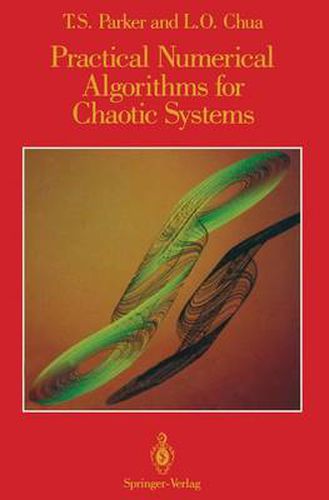Readings Newsletter
Become a Readings Member to make your shopping experience even easier.
Sign in or sign up for free!
You’re not far away from qualifying for FREE standard shipping within Australia
You’ve qualified for FREE standard shipping within Australia
The cart is loading…






This title is printed to order. This book may have been self-published. If so, we cannot guarantee the quality of the content. In the main most books will have gone through the editing process however some may not. We therefore suggest that you be aware of this before ordering this book. If in doubt check either the author or publisher’s details as we are unable to accept any returns unless they are faulty. Please contact us if you have any questions.
One of the basic tenets of science is that deterministic systems are completely predictable-given the initial condition and the equations describing a system, the behavior of the system can be predicted 1 for all time. The discovery of chaotic systems has eliminated this viewpoint. Simply put, a chaotic system is a deterministic system that exhibits random behavior. Though identified as a robust phenomenon only twenty years ago, chaos has almost certainly been encountered by scientists and engi neers many times during the last century only to be dismissed as physical noise. Chaos is such a wide-spread phenomenon that it has now been reported in virtually every scientific discipline: astronomy, biology, biophysics, chemistry, engineering, geology, mathematics, medicine, meteorology, plasmas, physics, and even the social sci ences. It is no coincidence that during the same two decades in which chaos has grown into an independent field of research, computers have permeated society. It is, in fact, the wide availability of inex pensive computing power that has spurred much of the research in chaotic dynamics. The reason is simple: the computer can calculate a solution of a nonlinear system. This is no small feat. Unlike lin ear systems, where closed-form solutions can be written in terms of the system’s eigenvalues and eigenvectors, few nonlinear systems and virtually no chaotic systems possess closed-form solutions.
$9.00 standard shipping within Australia
FREE standard shipping within Australia for orders over $100.00
Express & International shipping calculated at checkout
This title is printed to order. This book may have been self-published. If so, we cannot guarantee the quality of the content. In the main most books will have gone through the editing process however some may not. We therefore suggest that you be aware of this before ordering this book. If in doubt check either the author or publisher’s details as we are unable to accept any returns unless they are faulty. Please contact us if you have any questions.
One of the basic tenets of science is that deterministic systems are completely predictable-given the initial condition and the equations describing a system, the behavior of the system can be predicted 1 for all time. The discovery of chaotic systems has eliminated this viewpoint. Simply put, a chaotic system is a deterministic system that exhibits random behavior. Though identified as a robust phenomenon only twenty years ago, chaos has almost certainly been encountered by scientists and engi neers many times during the last century only to be dismissed as physical noise. Chaos is such a wide-spread phenomenon that it has now been reported in virtually every scientific discipline: astronomy, biology, biophysics, chemistry, engineering, geology, mathematics, medicine, meteorology, plasmas, physics, and even the social sci ences. It is no coincidence that during the same two decades in which chaos has grown into an independent field of research, computers have permeated society. It is, in fact, the wide availability of inex pensive computing power that has spurred much of the research in chaotic dynamics. The reason is simple: the computer can calculate a solution of a nonlinear system. This is no small feat. Unlike lin ear systems, where closed-form solutions can be written in terms of the system’s eigenvalues and eigenvectors, few nonlinear systems and virtually no chaotic systems possess closed-form solutions.